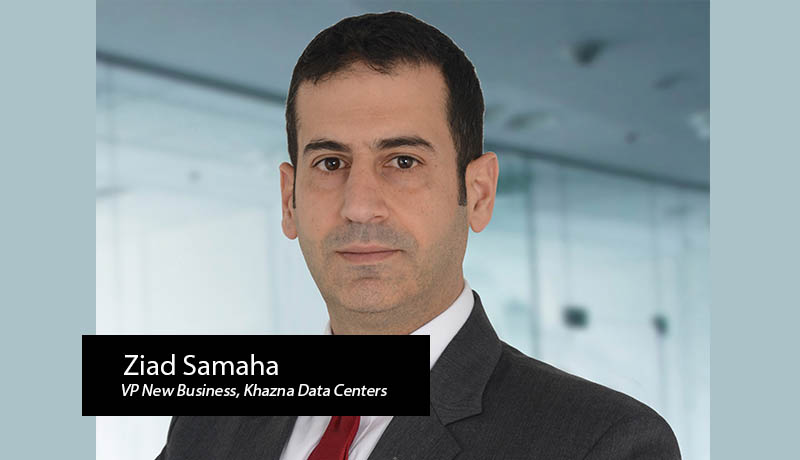
Attributed to Ziad Samaha, VP New Business, Khazna Data Centers
The gaming business, which was once considered a niche market, has grown dramatically to an expected $160 billion in 2021. With a growth rate of 14.5 percent year over year in 2020, the Middle East and North Africa (MENA) area is one of the fastest-growing gaming marketplaces, with a market value of $5.4 billion. Because they have the largest numbers of gamers, the United Arab Emirates (UAE), Saudi Arabia, and Egypt are at the forefront of this expansion.
In the United Arab Emirates, the gaming business is booming, thanks to increased interest and investment in fostering local talent and games. The average gaming spend in the UAE is projected to be around USD 115 per year. Saudi Arabia’s gaming market is anticipated to be worth SR2.6 billion as of mid-2021, and is expected to grow to SR9.5 billion by 2030. (quadruple in size). The Saudi gaming market has one of the greatest yearly growth rates in the world, at 22 percent as of early 2021. Saudi Arabia was even picked to host the PUBG Mobile Star Challenge World Cup, the region’s largest global gaming event; a significant milestone in the Middle East gaming sector.
With the usage of augmented reality (AR) and virtual reality, the industry has seized on technical advancements and new techniques such as highly enhanced graphics and immersive gaming experiences (VR). The availability of dependable, high-speed, low-latency internet connections has enabled the delivery of premium quality user experiences to gamers all over the world, including social and professional gamers competing on a global scale.
This necessitates stable service and massive capacity to offer an uninterrupted competitive gaming experience and easy access to viewing platforms. The data centre business can help to support this burgeoning market by constructing the necessary digital infrastructure to fulfil gaming’s location, space, connectivity, and latency requirements.
With the rise of digitalization, there has been a steady increase in the number of data centres established in recent years. With the spread of the COVID-19 pandemic, it was only natural to see a demand for more data centre capacity, especially given the increased reliance on e-commerce, streaming programmes, and virtual meetings.
A data center’s scalability is required to keep up with the growing player population and provide continuous viewing experiences to millions of gamers throughout the world.
The convenience of game consumption is aided by the availability of strong data centres, which allows players to play uninterrupted.
It’s easier than ever to play games on any device thanks to ongoing developments in networking and live-streaming technologies. Previously virtual tournaments and online gaming relied on a client-server approach and specialised co-located servers, which was only affordable for large game publishers. Data centre resources are now available to publishers of all sizes. This fueled the growth of games that don’t require the purchase of a gaming machine to play.
The ability of data centres to ensure unfailing accessibility is critical for eSport activities. Even the tiniest pause in the game has an influence on the player’s ability to compete successfully and consistently. This has an impact on the ability of the remote audience to view the sports. Data centres must have redundant infrastructure and business continuity procedures in place to guarantee 100 percent uptime in order to attain an uncompromising level of resilience.
The next era of gaming is rapidly gaining root, thanks to new technologies like 5G and a greater focus on network infrastructure. Cloud gaming is a streaming service that offers high-quality content at the expense of internet bandwidth and server resources. Any gaming service that allows players to access and play video games over a livestreamed link is referred to as cloud gaming. This is achieved through the use of remote data centres, which use a company’s computing power to stream a game directly to the gamer’s device.
Video games have traditionally needed gamers to own both the game and specialised consumer hardware to run it. Streaming technology allows the majority of the game’s computation to be done on the cloud rather than on the console. When video games are no longer constrained by console size, the possibilities for what they may be expand exponentially. As a result, games will no longer be restricted to a single platform or device.
While a user’s internet condition may influence the performance of a service to some extent, the ability of data to follow the quickest path from the hardware to the provider’s data centre will determine much of the success.
Latency is one thing that gamers will not tolerate. Delays, buffering, and packet loss will drive the player to abandon the game and, more than likely, to cancel their subscription to the cloud gaming service. Esports competitions can be jeopardised by even milliseconds of lag, putting important prizes at risk. Caching high-demand content in edge data centres closer to end users is one of the most effective means of reducing latency and lessening the overall stress on current infrastructure.
As the largest wholesale data center provider in the United Arab Emirates and the largest in the region, Khazna Data Centers is well-positioned to enable cloud gaming platforms to solve latency issues when transferring data from the cloud to the end user, improve the customer experience in terms of content and functionality, as well as ensure video content is delivered with a high-quality user experience.
The gaming business is expected to continue to grow, and high-quality cloud gaming services will require a significant amount of processing power in order to give gamers with the latest and greatest gaming experiences. The ability to ‘game on the move’ and play at any time and in any location is transforming the way people entertain themselves. Publishers are anticipated to target the MENA area as one of the fastest-growing markets in terms of players and revenue. Now is the moment to develop a solid infrastructure, which necessitates data centres that can handle traffic fluctuations while maintaining scalability and high availability.